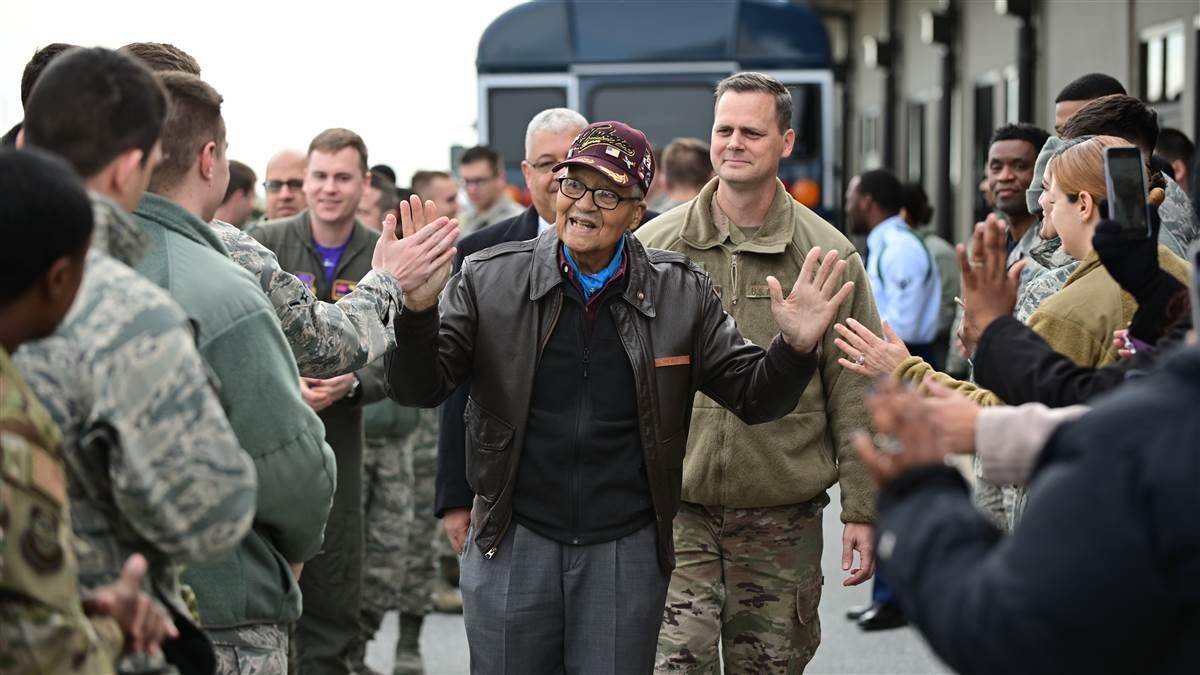Waypoints: A century of perseverance
African American pilot shares 100 years of wisdom

Photography by David Tulis
Retired U.S. Air Force Col. Charles E. McGee, one of the last remaining Tuskegee Airmen, turned 100 on December 7, 2019, commemorating the centennial by flying a Vision Jet on the day before his birthday and flying a Cessna Citation M2 the next day on his birthday. This after flying a HondaJet on his ninety-ninth birthday. And by “flying,” I mean flying—not just along for the ride. Pilots who flew with him say he handled all the controls with aplomb and had complete situational awareness regarding airspace, nearby traffic, and air traffic control expectations.
By the time he flew those early jets in Korea, he was already battle hardened, having flown 137 combat missions in World War II—P–39s, P–47Ds, and, of course, the Red Tail P–51 Mustangs that became synonymous with the Tuskegee Airmen.
After 100 combat missions in Korea, he flew again in Vietnam, safely returning from 172 missions in McDonnell RF–4 photo-reconnaissance jets. He retired from the Air Force in 1973 after 409 combat missions—one of the highest of any Air Force fighter pilot—and with 6,308 flying hours, an exceptionally high number for a military pilot.
But McGee’s biggest battle was not in the skies over Europe, Korea, or Vietnam, but on the ground in the United States where he and fellow African American servicemen were seen as grunts only, not given the opportunity to excel because of the belief that they were not capable of more.
During an interview with AOPA in the spring of 2019, McGee shared the prevailing excuses early in World War II for not allowing black aviators. Number one was that there were no black mechanics and white mechanics would never be permitted to work on airplanes flown by black pilots. As an experiment, he said, the Army agreed to train a group of African Americans to be aircraft mechanics. “The Army expected them to fail. And they didn’t,” McGee said. In fact, the first authorization for the 99th Pursuit Squadron—an all-black flying unit trained at the Tuskegee Institute in Alabama—was an experiment, McGee said.
When the mechanics succeeded, the “Army Air Corps said, ‘Oh my gosh, then we need an airfield for the pilot training,’” McGee recalled. They found $4 million to build training bases, including Tuskegee Army Airfield to train black pilots, even though there were already dozens of training fields in the country. But the Army leadership couldn’t imagine black pilots training on the same fields as white pilots.
As is evident now all these decades later, McGee and the other Tuskegee Airmen battled through years of segregation and racism to succeed. What is most surprising in talking with McGee is that there is no bitterness. He is matter-of-fact about how it was and continues today to be an advocate for perseverance in reaching your goals. He speaks often to school children, encouraging them to rise above whatever circumstances might try to hinder them from reaching their goals. In our interview with him he describes it as his four Ps:
- Perceive: Dream your dreams and pinpoint something you like doing.
- Prepare: Get a good education. Learn to read, write, and speak well.
- Perform: Let excellence be your goal in everything you do. Always doing your best. Nobody can ask more from you.
- Persevere: We could have gone off, bowed our heads as they called me names—didn’t like me—and not served our country. Don’t let circumstances like that be an excuse for not achieving.
Clearly in his century of life, McGee has developed great wisdom that all of us can benefit from. He is a national treasure of whom I and many others are in awe. Happy birthday, Col. McGee.
Email [email protected]



